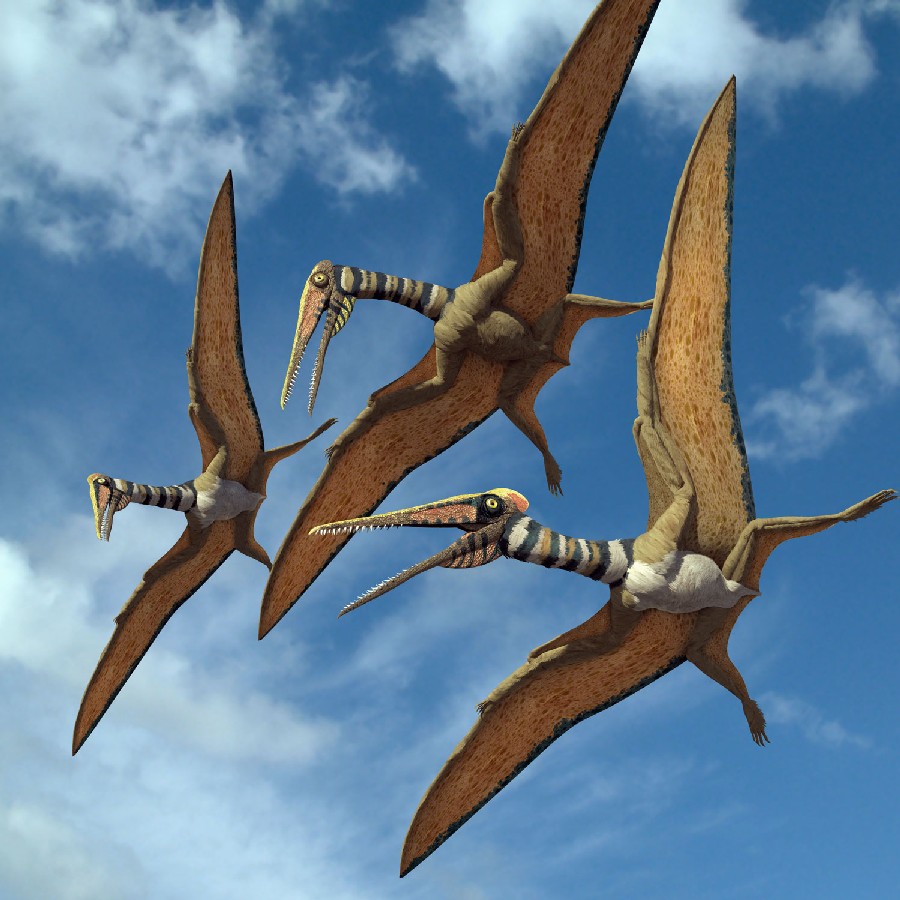U.S. and Chinese paleontologists say they have unearthed the fossils of what is the oldest and most primitive pterodactyloid pterosaur. This creature lived in what is today northwest China around the time of the Middle-Upper Jurassic boundary, about 163 million years ago.

This diagram shows the fossil fragments of Kryptodrakon progenitor. Scale bar – 5 cm. Image credit: Brian Andresemail et al / Peter Wellnhofer.
The reptile, named Kryptodrakon progenitor, is the first pterosaur to bear the characteristics of Pterodactyloidea, a highly specialized clade that includes the largest flying organisms.
The generic name, Kryptodrakon, comes from Krypto (hidden) and drakon (serpent), referring to ‘Crouching Tiger, Hidden Dragon’ filmed near where the species was discovered. The specific name, progenitor (ancestral or first-born), refers to its status as the earliest pterodactyloid.

The fossil fragments of Kryptodrakon progenitor were collected from a mudstone of the Shishugou Formation in 2001 by Chris Sloan, formerly of National Geographic and now President of Science Visualization. They were found about 35 m below an ash bed that has been dated back to more than 161 million years.
“This area was likely a flood plain at the time the pterosaur lived,” said Dr Brian Andres from the University of South Florida, the lead author of the study published in the journal Current Biology.
According to the study, Kryptodrakon progenitor was a small flying reptile with a wingspan of about 1.4 m.

Through studying its fragmentary remains, the paleontologists also determined that the pterodactyloids originated, lived, and evolved in terrestrial environments – rather than marine environments where other specimens have been found.
“Kryptodrakon progenitor fills in a very important gap in the history of pterosaurs. With him, they could walk and fly in whole new ways,” Dr Andres said.
Dr James Clark from the George Washington University’s Columbian College of Arts and Sciences, a co-author of the study, added: “Kryptodrakon progenitor is the second pterosaur species we’ve discovered in the Shishugou Formation and deepens our understanding of this unusually diverse Jurassic ecosystem.”

“It is rare for small, delicate fossils to be preserved in Jurassic terrestrial deposits, and the Shishugou fauna is giving us a glimpse of what was living alongside the behemoths like Mamenchisaurus.”
The scientists said: “this new take on the ecological history of pterosaurs is supported by a significant correlation found between wing shape and environment in pterosaurs and modern flying vertebrates, like bats and birds.”
“Pterosaurs, however, are not the ancestors of birds – those are the dinosaurs – and scientists still believe that pterosaurs did not evolve into birds or other modern animals humans would know.”
Source: sci.news








